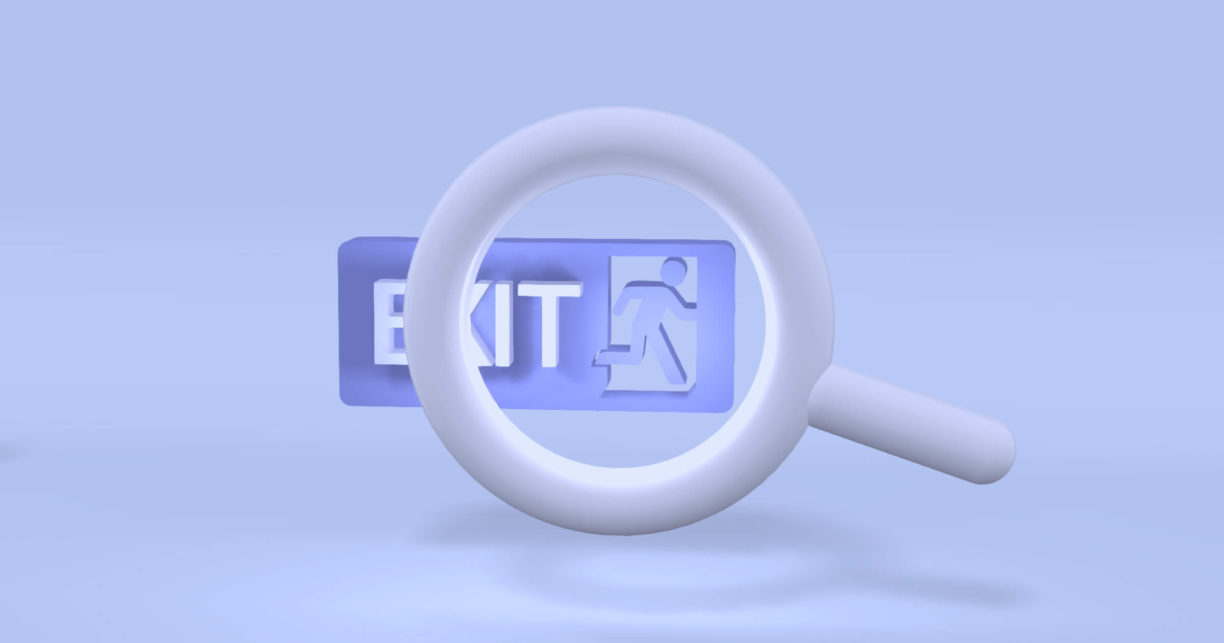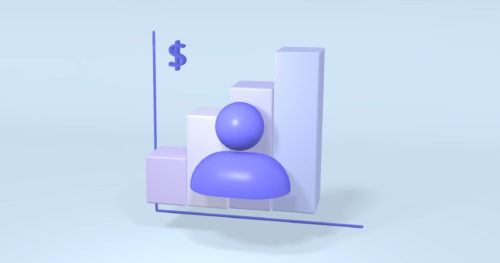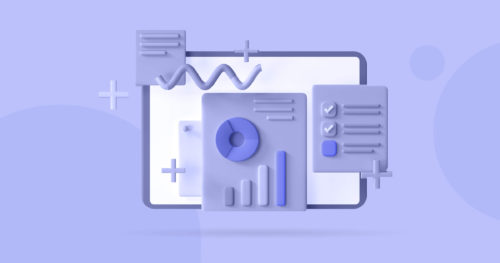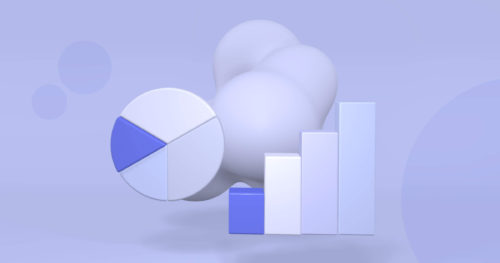Most businesses are not aware of the importance of churn analysis. Customers might leave your business due to one problem or the other. Evaluating the cause of the loss of customers in your business is one of any company’s biggest tasks on hand.
Firstly, churn refers to the rate at which a business loses its buyers after a period. Analyzing the reasons for this loss is what every company should focus on. The analysis promises to reveal useful data about your loss of customers, and it can also help businesses improve their services using the relevant churn data.
So, we will discuss everything you need to know about the analysis of churn data and how businesses can evaluate their loss of customers.
What is Churn Analysis?
This is the process of using data to analyze churn. This often involves investigating the churn rate, which is the percentage of customers who stop using a company’s product or service within a given period.
Businesses can use churn analysis to improve their customer retention rate by preventing current customers from leaving and keeping potential customers from becoming competitors’ new customers. It can also help businesses understand why they are losing customers to make changes to their business.
How Does Churn Analysis Work?
This analysis is an integral part of managing a successful business, and it’s no different in the marketing world. For marketers, it enables them to understand better why customers leave so that they can work to keep those customers—or figure out which types of customers are worth keeping.
The approach used in churn analysis depends on several factors, including the context in which it will be applied, the type of data being analyzed, and the intended use of that information.
For a successful analysis, businesses should consider using the following KPI (Key Performance Indicator):
Customer engagement
Number of support tickets
The number of canceled subscriptions.
Likelihood to upgrade
Why is Analyzing It Important?
Churn analysis is one of the most important metrics in SaaS. This is because it can provide insights into how well your company is doing at retaining customers, which is a crucial indicator of how successful your product or service will be in the future.
To put it simply: if you lose customers, you have lost revenue. In some cases, losing customers can even lead to bankruptcy if they are lost too quickly or in large numbers. Therefore, understanding why people leave your business and what you can do to prevent them from leaving is essential for all SaaS companies that wants to stay afloat in the long term.
Churn rate is an indicator of customer loyalty or how much customers feel valued by your beheavior, which means it can tell you how likely customers are to stay with your software over time. It’s also a useful way for comparing different products or companies within the same vertical — for instance, if you’re comparing two main competitors in the same market space.
However, churn rate only tells part of the story — it’s one measure among many that can be used to assess customer satisfaction and retention within a business context.
For example, let’s say that after analyzing your data from last year when a customer canceled their subscription, it turns out that most of them were dissatisfied with the service quality or cost. Now that you know this information, you can change something about your business model (such as lowering prices) or improve customer satisfaction by offering better support or faster shipping times.
How to Calculate Churn?
Unhappy and dissatisfied customers are the bane of any business’s existence. The good news? There are ways to get rid of them.
The first step is understanding your churn rate. This is a number between 0 and 1- which tells you how many more customers you have lost during a given period relative to the total number of customers you had at the beginning of the period.
For example, if you started with 100 customers and lost 10 by the end of the month, your monthly churn rate would be 0.1.
Churn rates can be expressed daily, weekly, monthly, or annual basis—it differs from brand to brand. Let’s look at how to calculate churn:
Churn rate = (Number of leaving customers at a particular period ÷ total number of customers) x 100.
For instance, a company lost 200 customers within a calendar year. At the start of the year, they had 1,000 customers.
The churn rate would be 200 ÷ 1000 = 0.2
0.2 x 100 = 20%.
That means the percentage churn rate is 20%.
How to Use the Data Collected from Analyzing It?
There are many ways that you can use churn analysis data. Here are a few:
Use the data to spot patterns and trends – What months of the year do your customers mostly leave? Is there a seasonal pattern that is causing the high churn rate?
Use the data to evaluate the effectiveness of your retention efforts – If you had redesigned your product page and reduced churn, you would know that it was effective.
Use the data to predict future revenue – You can use this information to predict how much money will be coming in from customers next year, based on what you have now.
Types of Churn
An important aspect of this topic to define is the types of churn. There are five different ways in which churn manifests itself:
1. Revenue churn
This loss of revenue stream is typically associated with a service, such as SaaS (software as a service) subscriptions or media streaming services like Netflix and Hulu. In these cases, users pay to use the service every month, and if they leave, there is no recurring payment for that month or subsequent months, causing the company to lose revenue for those months.
2. Customer churn
When we refer to “churn rate” without any modifiers like “revenue,” It refers to how many customers have left a product or service platform over some period of time divided by the total number of customers during that same period.
The loss of customers can be detrimental because fewer people paying for your product means less money overall. You’ll probably have to work harder for each new customer you acquire because fewer people are hearing about your product through word-of-mouth marketing.
3. Happy churn
This type of churn happens when a customer uses your product and is satisfied, so they leave. Although it is a positive and good churn, it might also mean that your product or service does not have repeat value.
Having products or services with repeat value is the best way of attaining customer retention. Involuntary churn is often not in a business’ hands but it should try to add as much value as possible to the customer journey- so that they keep availing your services and products even when the demand ends.
4. Fake churn
Companies usually put a money-back guarantee on their products, and customers who return your product/service within the money-back guarantee period should fall under the fake churn category. As a business owner, you must calculate the loss from these situations, as spending on new customers would be inevitable.
5. Proactive churn
This type of churn is what all businesses should try to avoid. It happens when a customer willingly leaves your products/service/cancels a subscription. Churn analysis would help you analyze the causes of this loss. It might be due to poor onboarding, poor customer support, credit card failure, or unavailability of a customer preferred feature. Whichever it is, you must try to fix it! Voluntary churn should be avoided at all costs.
Generally, churn mostly has a harmful impact on your business. So, you must try to access every type of actionable insight to reduce the rate at which customers are leaving and this will help reduce future churn.
How to Use Customer Data Analysis to Prevent and Reduce Churn?
Churn is a problem that can plague any company. It’s more expensive to acquire new customers than to retain existing ones, and a small percentage increase in customer retention can hugely and positively affect your bottom line. If you’re losing too many customers, that will hurt your revenue.
When you’re using churn analysis to retain existing clients, the data is most effective when it’s used to identify such trends and patterns. You can then use this information to develop strategies that target the exact areas where you’re losing customers.
In your churn analysis, you notice that nearly all of your lost customers have a common complaint about the billing process. You could then work to improve that aspect of your business and make sure the problem doesn’t continue to push customers away.
How to Analyze Your Data?
Performing churn analysis is like solving a jigsaw puzzle: you’ll need to find the solution by piecing together different information. To do so, you need to understand what information is relevant and how it should fit into your analysis.
To help you get started, here are some questions and churn metrics you need to consider:
What does the customer’s life cycle look like?
What is the customer’s journey?
What does a customer’s behavior look like?
How do we measure customer experience?
What is the average customer lifetime value?
What problem are customers trying to solve by using our product or service? And what happens when they don’t have access to our services anymore (e.g., on a free trial)?
Why did they subscribe in the first place, and why would they opt out now?
Are there other features that are so useful that more people would subscribe if those were available?
Why not offer those as standalone services (e.g., if users only subscribe for one specific feature)? Or offer premium versions of these popular features with additional functionality (i.e., an upsell)?
These are critical questions that would help you provide answers to your customer’s plea during churn analysis. You have to access this information and act on them accordingly.
Conclusion
Churn rate data can help you improve customer retention efforts and predict future revenue stream. It’s simple to calculate churn rate, but that doesn’t mean it’s useless.
The information from this calculation can tell you a lot about how your customers feel about your product or service and what actions need to be taken to improve their satisfaction with your company. You can use the resulting churn rate data to improve customer retention efforts and predict future revenue levels.
Many businesses use churn rates to increase their customer retention and minimize customer acquisition costs. Today’s business world thrives on keeping long-term partnerships and building strong relationships with customers, and churn analysis is the first step.
So far, we believe that we have discussed enough for you to know what churn analysis is and how it works. But we still have more information below in the FAQ section.
FAQs
How is churn analysis related to customer acquisition costs?
There have been many talks lately about CAC and whether or not companies should be concerned about it. But what exactly is CAC? And why does it matter? CAC stands for Customer Acquisition Cost. It represents the amount paid by a consumer to acquire any one customer, normally as a lump sum upfront payment.
Companies with high churn rates would have to succumb to the demands of CAC. They would always be on the lookout for customers due to losing too many. But businesses try to keep their customer acquisition rate to the lowest minimum.
How to use churn data analysis to improve customer retention?
You can use churn analysis to improve customer retention in various ways. Here are just a few:
Improve your product based on customer feedback: One way to retain customers is to make sure that you meet their needs and provide them with the best possible service or product. If you aren’t already, you should be collecting customer feedback frequently and working with that data to improve your offerings.
Improve customer loyalty by providing incentives: A tried-and-true method of improving retention is providing customers who stick with your company for a certain amount of time some form of gifts, such as rewards points, discounts, or special offers. These kinds of bonuses give customers an incentive to stay with you and purchase additional products or services from you.
Reduce the costs involved in switching providers or products: If your customers are leaving because they’ve found another provider that’s cheaper than yours, it might be time to reevaluate how much your services cost and whether they’re worth what they charge (or it could be time to find a new service provider!).




